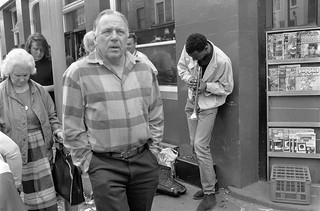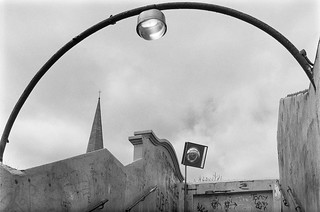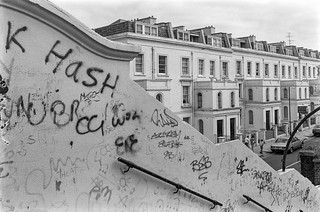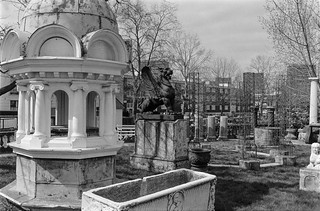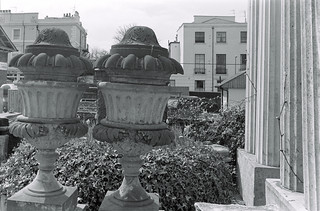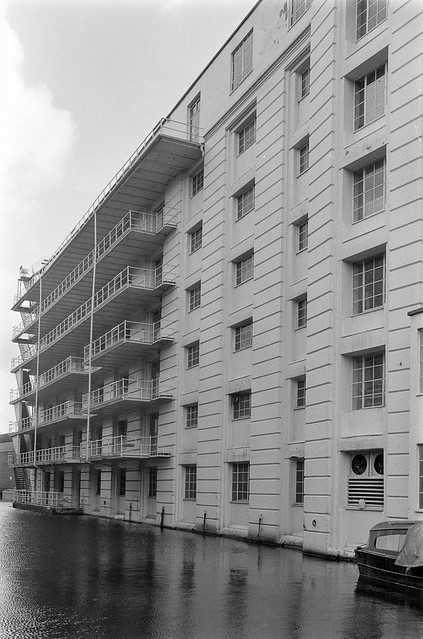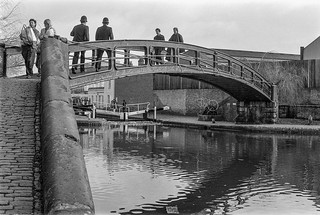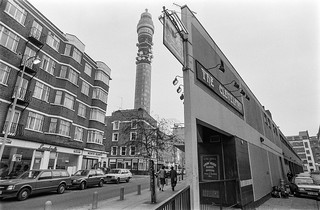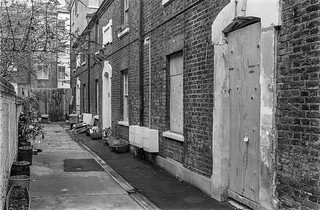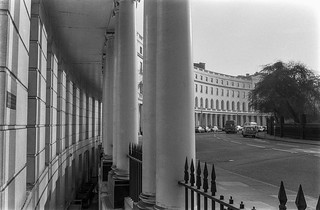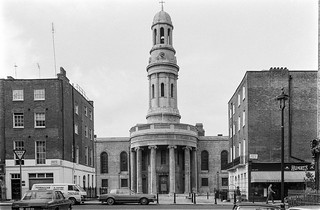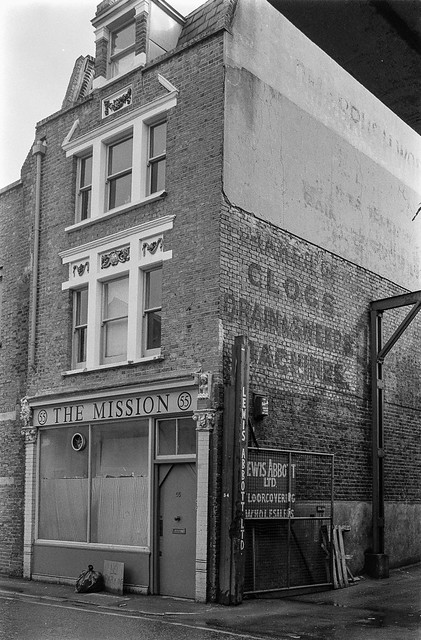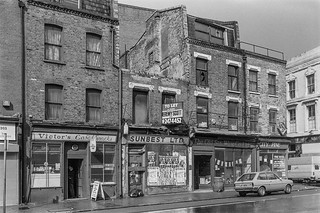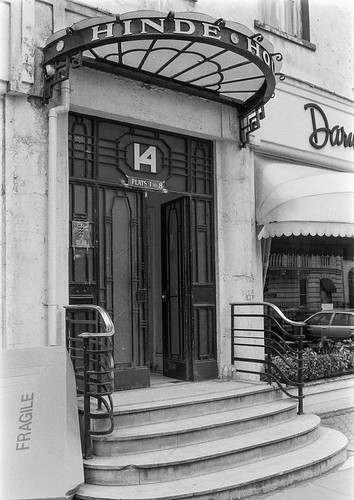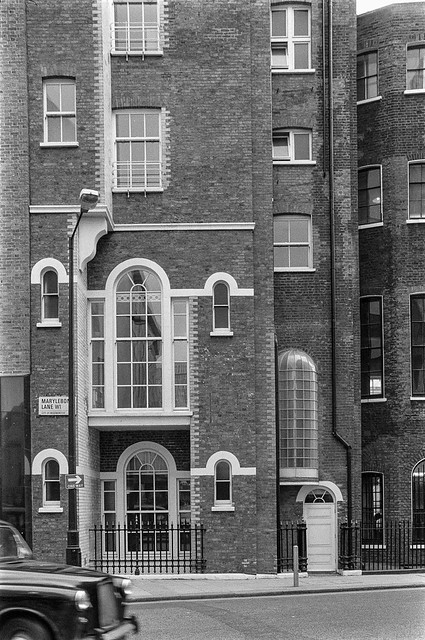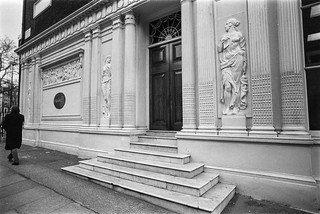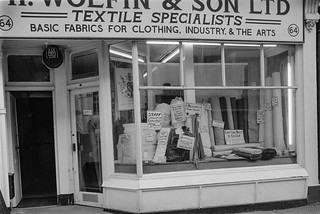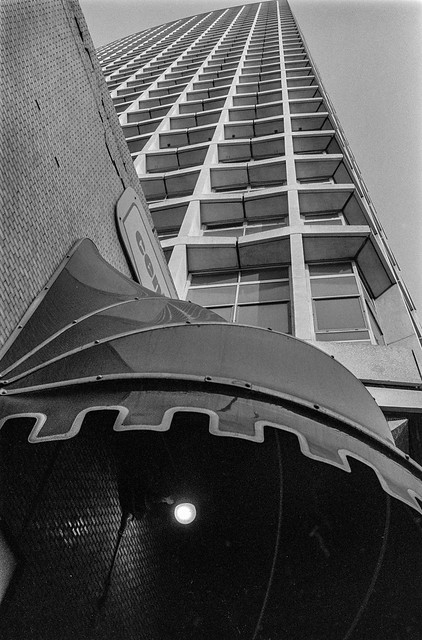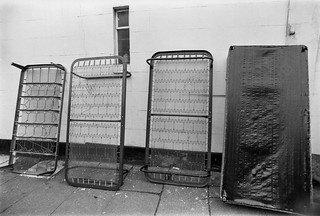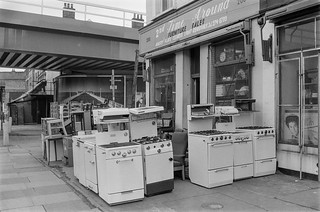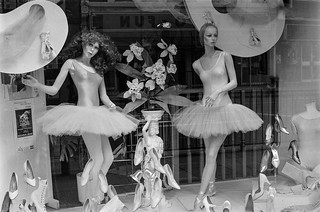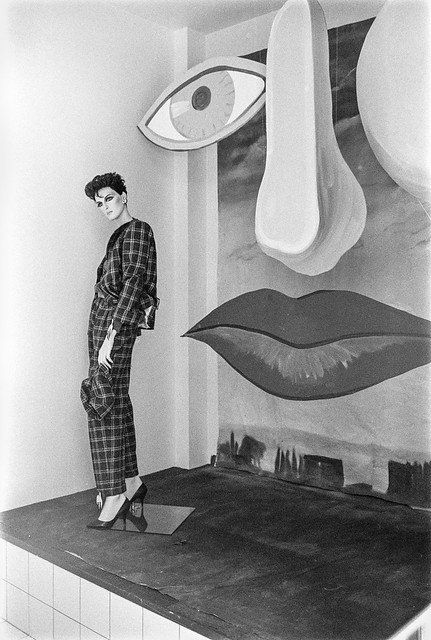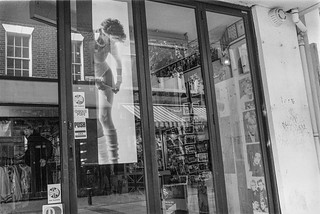I can’t now remember why I went to Notting Hill in April 1987 as it wasn’t quite on my plans for taking pictures at the time, and it was clearly only a fairly brief visit, walking up the Portobello Rd, usually the kind of tourist trap which I was then trying to avoid. It was perhaps the end of my walk with my son along the Paddington Arm of the Grand Union, leaving it at Great Western St and walking down to catch the tube from Notting Hill Gate.
I wasn’t at the time very familiar with Notting Hill, at least outside various works of fiction such as Colin MacInnes’ ‘Absolute Beginners’ written in 1959 and including some graphic descriptions of the 1958 Notting Hill ‘riots’. a series of attacks by white youths, mainly “Teddy Boys”, on black residents of the area. A great book about an extremely cool teenage photographer which was made into a extremely poor film musical, which flopped despite a score by Gil Evans, title track by David Bowie (which reached No 2 in the charts) and contributions from other pop and jazz luminaries including Paul Weller, Ray Davies, Sade, Slim Gaillard and Smiley Culture.
It may well have been the film and all the publicity around it which prompted me to walk on past Westbourne Grove station and down Portobello Rd to Notting Hill Gate. And it will certainly have been my interest in jazz which made me stop and listen and take pictures of a small combo playing on the street, deliberately choosing to work through the crowd.
All of these pictures were I think taken on my Leica M2, which by then had a 35mm f1.4 Summilux almost permanently attached. It was a lens I had lusted over in the window of a secondhand shop in Camden for some time before handing over around a month’s salary. After that the 50mm collapsible f2.8 Elmar saw very little use; later I got a 90mm f2.8 too, but found that gave such a small viewfinder image it was almost unusable, except perhaps for a few distant landscapes.
I didn’t take many pictures, but you can find a few more on page 4 of my 1987 London Photos.
All photographs on this and my other sites, unless otherwise stated, are taken by and copyright of Peter Marshall, and are available for reproduction or can be bought as prints.


